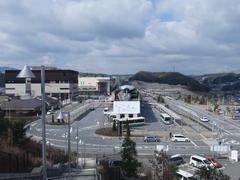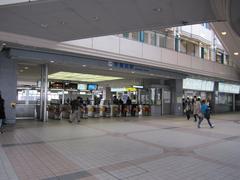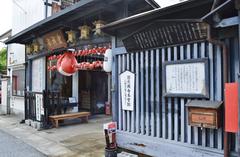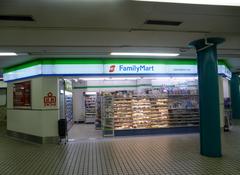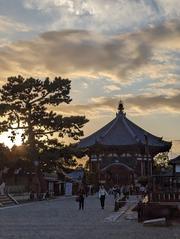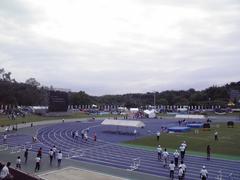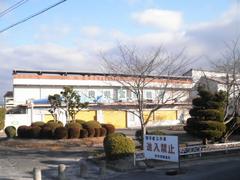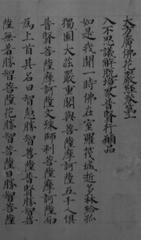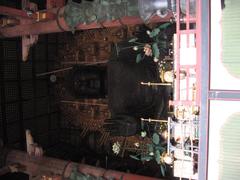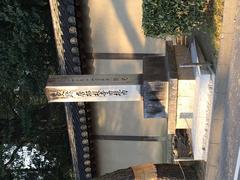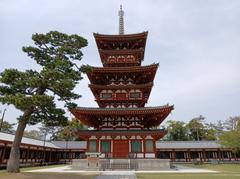
Visiting Takanohara Station, Nara, Japan: Comprehensive Guide to Tickets, Hours, and Attractions
Date: 04/07/2025
Introduction
Takanohara Station (高の原駅), located in Nara City within the vibrant Kansai region, is a vital gateway connecting travelers to the historical, cultural, and modern attractions of Nara Prefecture. Since its opening in 1972 to support the rapidly developing Heijo New Town, the station has grown into more than just a transit hub—it is a cultural landmark symbolizing the fusion of tradition and progress. The station’s name, rooted in the Man’yōshū poetry anthology, and the monument at its entrance featuring Prince Nagaya’s poem, highlight its deep connection to Japanese heritage.
This guide provides a detailed overview of Takanohara Station’s layout, facilities, accessibility, ticketing, and operational hours, ensuring a smooth and enjoyable travel experience. Whether you’re visiting Nara’s UNESCO World Heritage sites, the innovative Kansai Science City, or exploring the Takanohara Monument and surrounding neighborhoods, you’ll find practical advice on transportation, amenities, and local customs.
For the latest train schedules, ticketing information, and travel updates, refer to official resources such as the Kintetsu Railway website and Nara’s tourism portals. Additional tips and real-time information are available via the Audiala app (Takanohara Station Guide, Visit Nara, Japan Activity).
Table of Contents
- Historical Background
- Station Layout, Facilities, and Accessibility
- Visitor Information
- Connectivity and Transport Links
- Accessibility Beyond the Station
- Practical Travel Tips
- Nearby Attractions and Cultural Highlights
- Cultural Insights
- Seasonal Events
- Frequently Asked Questions (FAQ)
- Conclusion
Historical Background
Origins and Naming
Takanohara Station opened in November 1972 to serve the growing population of Heijo New Town, a major suburban development in Nara. The station’s name, “Takanohara,” is drawn from a location referenced in the ancient Man’yōshū poetry anthology, tying the station to a rich literary and historical tradition. A monument inscribed with Prince Nagaya’s Man’yōshū poem stands at the station entrance, reflecting its deep cultural roots (Wikipedia 高の原駅).
Development and Urban Integration
Designed to support both Heijo and Sagara New Towns, Takanohara Station has played a central role in transforming the area into a vibrant suburban community. The 50th anniversary of Heijo New Town in 2022 was marked by the unveiling of a commemorative monument, highlighting the station’s continuing significance in shaping local identity.
Architectural Features
Takanohara Station features two island platforms serving four tracks, a bridge-style elevated station building with a single ticket gate, and sidings for train maintenance and storage. The elevated concourse connects both sides of the neighborhood, and accessibility improvements include elevators, tactile paving, and accessible restrooms.
Station Layout, Facilities, and Accessibility
Platform Configuration
The station’s two island platforms handle four tracks, allowing efficient boarding and alighting for six-car trains standard on the Kyoto Line. The outer tracks are typically used by passing trains, while the inner tracks facilitate safe and efficient passenger movement (Wikipedia).
Elevated Station Building
The station building, positioned above the tracks, houses ticket counters, automated ticket machines, and access points via stairs, escalators, and elevators. This design maximizes space and connects directly to surrounding pedestrian areas and bus stops.
Ticket Gates and Access Points
A single, staffed ticket gate simplifies navigation. Automated ticket machines, available in Japanese and English, support IC cards (ICOCA, PiTaPa, Suica) and cash payments (Everything Explained Today).
Passenger Amenities
- Restrooms: Accessible toilets for all passengers.
- Waiting Areas: Sheltered seating on platforms and in the concourse.
- Retail & Vending: Vending machines and nearby convenience stores provide snacks and drinks.
- Information Services: Staff assistance available in Japanese (limited English); for more language support, visit the Nara Visitor Center & Inn.
- Free Wi-Fi: “Nara City Free Wi-Fi” is accessible throughout the station (Visit Nara).
Ticketing and IC Card Support
- Automated machines accept cash and major IC cards.
- English menus provided.
- Fare adjustment machines are located near the gates.
Luggage and Storage
- Coin-operated lockers for small to medium bags are available.
- For large luggage or long-term storage, use major stations like Kyoto or Nara Station, or take advantage of luggage forwarding services.
Accessibility Features
- Elevators and escalators for step-free access.
- Accessible restrooms with handrails.
- Tactile paving for the visually impaired.
- Staff assistance for passengers with special needs (Visit Nara).
Safety and Security
- Security cameras and emergency call buttons throughout the station.
- AEDs (defibrillators) installed.
- Clear, bilingual signage for easy navigation.
Visitor Information
Visiting Hours
The station operates from around 5:00 AM to midnight, matching the Kintetsu Kyoto Line train schedules. For exact times, refer to the Kintetsu Railway website.
Tickets and Prices
Fares depend on your destination and can be checked at ticket machines or online. Tickets are available through:
- Automated machines (with English support)
- IC cards for seamless travel
- Station staff at the gate
Special Features and Events
While the station itself does not host major events, it provides access to seasonal festivals, historical sites, and community activities in Nara. The Man’yōshū monument at the entrance is a popular spot for photos, especially during local celebrations (Japan Activity).
Connectivity and Transport Links
Bus Connections
Adjacent bus stops offer convenient routes to local neighborhoods, shopping centers, and tourist attractions. Timetables are displayed in Japanese and English (Everything Explained Today).
Taxi Stand
Taxis are available at the station entrance, ideal for travelers with luggage or those heading to destinations beyond public transport routes.
Bicycle Parking
Secure bike racks are located near the station, supporting local commuting and eco-friendly sightseeing.
Accessibility Beyond the Station
Takanohara Station is fully integrated with local transportation, offering barrier-free buses and accessible pathways to nearby attractions, making it easy for all travelers to reach Nara’s historical sites.
Practical Travel Tips
- Avoid peak commuter hours: 7:30–9:00 AM and 5:00–7:00 PM.
- Use lockers or luggage forwarding for large bags.
- Carry cash as not all local shops accept cards.
- Download a QR code reader and use free Wi-Fi for travel information.
- Plan routes using the Audiala app or official transport websites.
Nearby Attractions and Cultural Highlights
Kansai Science City
A hub for research and culture, easily accessible from Takanohara Station.
Nara Park and UNESCO World Heritage Sites
Home to free-roaming deer, Todai-ji Temple (housing the Great Buddha), and Kasuga Taisha Shrine. Reachable via direct trains and connecting buses.
San Town Shopping Complex
Located by the west exit, offering shopping and dining options.
Takanohara Monument
A culturally significant site near the station, commemorating historical figures and events. Open daily 9:00 AM–5:00 PM (closed Tuesdays and New Year holidays), with tickets available onsite or online (Visit Nara).
Heijo Palace Site
A UNESCO World Heritage Site with reconstructed palace buildings and seasonal events. Admission to the grounds is free; small fees apply for exhibitions (Japan Activity).
Todaiji Temple and Nara Park
Famous for the Great Buddha, open 7:30 AM–5:30 PM (seasonal variations), with an admission fee (Activity Japan).
Kasuga Taisha Shrine
Famed for its lantern festivals and spiritual atmosphere, open 6:30 AM–5:30 PM, with partial free access.
Saidai-ji Temple
Historic temple renowned for peaceful gardens and local festivals, open 9:00 AM–4:30 PM.
Naramachi District
A preserved merchant quarter with traditional townhouses, museums, and artisan shops.
Kiko-ji, Toshodai-ji, and Yakushi-ji Temples
Ancient temples celebrated for their architecture and seasonal flower displays, accessible by train and short walks from nearby stations.
Cultural Insights
Harmony of Nature and Spirituality
Nara’s culture embodies the spiritual connection with nature, showcased by the sacred deer of Nara Park and local rituals.
Traditional Arts and Crafts
Participate in tea ceremonies, pottery, and calligraphy workshops near Takanohara Station (Activity Japan).
Festivals and Local Customs
Experience vibrant festivals such as the Nara Tokae Lantern Festival and Kasuga Wakamiya On-Matsuri (Japan Activity).
Culinary Traditions
Enjoy specialties like kakinoha sushi and yomogi mochi at local restaurants and shops.
Seasonal Events
- Spring: Cherry blossoms at Heijo Palace and Nara Park (Danayao).
- Summer: Lantern festivals and lotus blooms (Japan Activity).
- Autumn: Foliage at Kasuga Taisha and cosmos fields (Japan Travel).
- Winter: On-Matsuri and Wakakusa Yamayaki fire festival (Danayao).
Frequently Asked Questions (FAQ)
Q: What are Takanohara Station’s visiting hours?
A: Open from about 5:00 AM to midnight, aligned with train schedules.
Q: How can I buy tickets at the station?
A: At automated machines (English available), with IC cards, or from staff.
Q: Is the station wheelchair accessible?
A: Yes, with elevators, tactile paving, and accessible restrooms.
Q: Can I store luggage at Takanohara Station?
A: Coin lockers for small/medium bags are available; use larger stations for bulky items.
Q: How do I reach major Nara attractions from Takanohara Station?
A: Use direct trains, connecting buses, or taxis for easy access.
Conclusion
Takanohara Station is a modern, accessible transit hub that seamlessly connects visitors to Nara’s historical and cultural riches. Its thoughtful design, comprehensive facilities, and central location make it the ideal starting point for exploring the region’s temples, monuments, festivals, and culinary traditions. Plan your journey using official resources and travel apps like Audiala for up-to-date information, and immerse yourself in the unique blend of ancient tradition and contemporary convenience that defines Nara.
Sources and Further Reading
- Takanohara Station Guide: Visiting Hours, Tickets, and Exploring Nara Historical Sites, 2025, Audiala
- Takanohara Station Guide: Layout, Facilities, Visiting Hours, Tickets, and Nearby Attractions, 2025, Everything Explained Today
- Visiting Takanohara Monument: History, Visitor Information, and Transportation Guide, 2025, Nara Tourism Official Site
- Exploring Nara Historical Sites: Visiting Hours, Tickets, and Cultural Highlights near Takanohara Station, 2025, Japan Activity
- Visit Nara, 2025, Visit Nara Official Travel Site
- Kintetsu Railway Timetable and Passes, 2025, Kintetsu Railway Official
- Audiala App, 2025, Audiala






